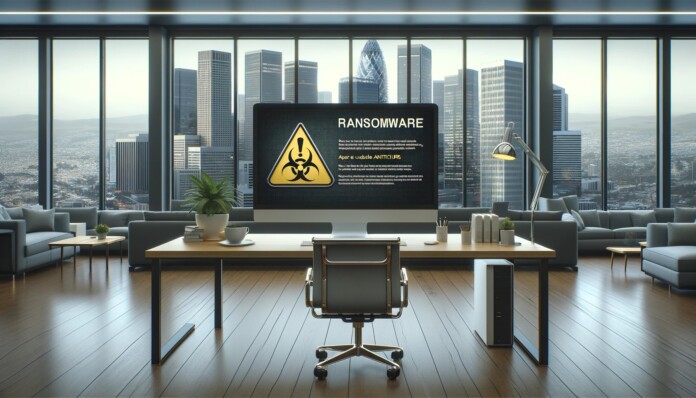
[By Jaye Tillson, Field CTO at Axis Security]
In the vast expanse of cyberspace, few threats cast a darker shadow more than ransomware. This digital desperado wreaks havoc on individuals and businesses alike, holding precious data hostage for a hefty ransom. But this villain’s tale stretches back further than you might think, with its roots tangled in the Cold War and its impact resulting in billions lost today. Let’s explore the shadowy origins of ransomware, unfurl its nefarious forms, and discover how Zero Trust plays the role of cyber sheriff, standing guard against this modern-day scourge.
From Academic Experiment to Global Plague
In the 1980s, the world of computing witnessed a curious experiment. Joe Popp devised a rudimentary “AIDS Trojan” that encrypted files and demanded payment for their release. Though intended as a social commentary on online trust, the seeds of a much wider threat were sown. Fast forward to 2023, and ransomware has evolved into a multi-billion dollar industry, leaving a trail of crippled businesses, compromised data, and shattered confidence in its wake. According to Cybersecurity Ventures, ransomware costs are projected to reach a staggering $265 billion by 2031, a grim testament to the reach and power of this digital outlaw.
A Trio of Terror
Ransomware isn’t a monolith; it comes in various guises, each with its own chilling modus operandi. Let’s meet the infamous three:
- Crypto-Ransomware: This classic scoundrel encrypts your files, rendering them inaccessible until you cough up the ransom. Imagine your cherished family photos, work documents, and irreplaceable memories locked away in a digital vault, accessible only through the villain’s cruel terms. Sophos reports in 2023 alone that the average ransom demand reached $1.54 million, a steep price to pay for digital freedom.
- Locker Ransomware: Forget encrypted files; this brute force bully slams the door shut on your entire system. Think of being locked out of your own house, unable to access even the most basic functions. In 2022, according to AAG IT Support, 47% of ransomware attacks targeted organizations in the United States, highlighting the widespread reach of this digital siege.
- Doxware: This double-barreled bandit not only encrypts your data, but it also threatens to leak it publicly unless you pay up. Imagine facing the humiliation and potential legal repercussions of your private information plastered across the digital landscape. In 2023, the Cybersecurity & Infrastructure Security Agency (CISA) reported a 136% increase in data exfiltration incidents, a chilling trend directly linked to the rise of doxware.
Counting the Cost of Digital Mayhem
The impact of ransomware extends far beyond the initial ransom demand. Studies by the Ponemon Institute reveal that average costs associated with a ransomware attack include:
- Recovery Costs: $761,650
- Business Disruption: $1,270,000
- Reputational Damage: $1,648,500
These figures paint a stark picture of the financial and reputational devastation wreaked by ransomware. Not only do businesses lose vital data and incur downtime, but they also face the erosion of trust from customers and clients, a blow that can be even more difficult to recover from.
Enter Zero Trust, the Cyber Sheriff
Traditional network security, like a rickety wooden gate, relies on trust and perimeter defenses. But in the Wild West of cyberspace, trust is easily breached, and perimeter walls crumble under the relentless pressure of sophisticated attacks. Zero Trust, however, operates like a vigilant cyber sheriff, constantly verifying every digital entity attempting to enter the digital town.
Here’s how Zero Trust stands guard against ransomware:
- Multi-Factor Authentication: Consider it an extra lock on the digital door, demanding not just a password but an additional layer of verification (biometric scan, phone code) before granting access.
- Network Segmentation: Instead of a single, vulnerable town square, Zero Trust divides the network into secure zones, limiting the spread of ransomware if it manages to breach one perimeter.
- Least Privilege Access: Forget everyone having a master key; Zero Trust grants only the minimum level of access needed for each user and device, minimizing the potential damage a compromised entity can inflict.
In today’s Wild West, these measures, combined with ongoing security awareness training and robust data backups, form a formidable defense against the digital outlaws of the 21st century.
Conclusion
The fight against ransomware is a continuous journey, but understanding its origins, recognizing its diverse forms, and wielding the tools of Zero Trust empowers us to ride into the digital sunset with confidence. While the shadow of ransomware may loom large, knowledge is our six-shooter, vigilance our loyal steed, and Zero Trust is the fortified town walls safeguarding our valuable data.
By remaining informed, adopting proactive security measures, and embracing a culture of cybersecurity awareness, we can keep the outlaws at bay and maintain control of our digital frontier. Remember, in the Wild West of cyberspace, preparedness is our strongest weapon, and together, we can ensure that ransomware remains a relic of the past, not a threat of the future.



















